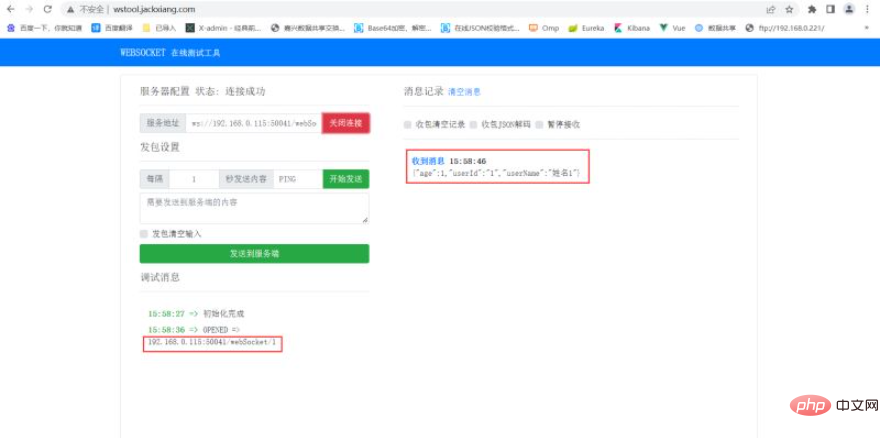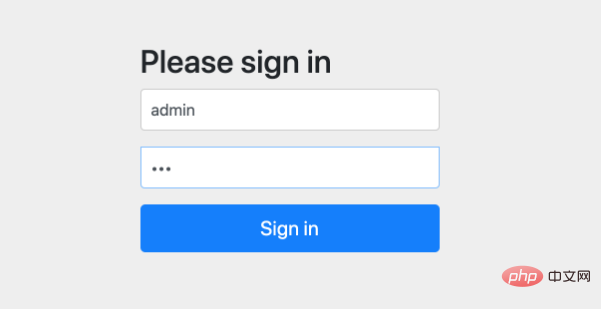
Methods to solve memory leaks in Go language Websocket applications require specific code examples
Websocket is a protocol that implements full-duplex communication on the network and is commonly used Real-time data transmission and push. In Go language, we can write Websocket applications by using the WebSocket module in the standard library net/http. However, when developing Websocket applications, we may encounter memory leaks, causing the application to degrade in performance or even crash. This article will introduce some common causes of memory leaks, give solutions, and provide specific code examples.
1. Cause analysis
The garbage collection mechanism of the Go language can automatically release memory that is no longer used, but if we use Websocket incorrectly in the application, it may also cause memory leaks. The following are some common causes of memory leaks:
- Keeping unclosed connections for a long time: When a Websocket connection is opened, if we do not close the connection correctly, the resources occupied by the connection will not be is released, causing a memory leak.
- Asynchronous tasks are not managed correctly: Websocket applications usually need to handle multiple concurrent connection requests. If we do not manage resources correctly in asynchronous tasks, it will also cause memory leaks.
- Third-party dependencies of memory leaks: If there are memory leaks in the third-party libraries that the application depends on, it will directly affect the performance of the entire application.
2. Solution
In order to solve the memory leak problem of Go language Websocket application, we can take the following methods:
2.1 Close the connection correctly
When writing Websocket applications, be sure to properly close connections when they are no longer in use. You can listen to the connection closing event in the ServeHTTP method of http.Handler, and then perform the operation of closing the connection in the event callback function. The following is a sample code:
func MyHandler(w http.ResponseWriter, r *http.Request) {
conn, err := upgrader.Upgrade(w, r, nil)
if err != nil {
log.Println(err)
return
}
go func() {
for {
mt, message, err := conn.ReadMessage()
if err != nil {
log.Println(err)
break
}
log.Printf("recv: %s", message)
// 处理消息逻辑
// 如果不再需要该连接,可以调用conn.Close()关闭连接
if shouldClose {
conn.Close()
break
}
}
}()
}In the above sample code, we listen for messages from the connection in a loop and call conn.Close() to close the connection when a certain condition is met .
2.2 Managing concurrent connections
Websocket applications usually need to handle multiple concurrent connection requests. To properly manage concurrent connections, you can use sync.WaitGroup to wait for all connection processing to complete before exiting the application. Here is a sample code:
var wg sync.WaitGroup
func MyHandler(w http.ResponseWriter, r *http.Request) {
conn, err := upgrader.Upgrade(w, r, nil)
if err != nil {
log.Println(err)
return
}
wg.Add(1)
go func() {
defer wg.Done()
// 处理连接逻辑
}()
}
func main() {
http.HandleFunc("/", MyHandler)
go http.ListenAndServe(":8080", nil)
// 等待所有连接处理完成
wg.Wait()
} In the above sample code, we use sync.WaitGroup to wait for the processing of all connections to complete before exiting the application.
2.3 Using memory analysis tools
Go language provides some memory analysis tools that can help us find potential memory leaks. For example, you can use the WriteHeapProfile function in the runtime/pprof package to generate a heap memory analysis file. The following is a sample code:
import (
"os"
"runtime/pprof"
)
func main() {
f, err := os.Create("heap_profile.pprof")
if err != nil {
log.Fatal(err)
}
defer f.Close()
pprof.WriteHeapProfile(f)
} In the above sample code, we create a file using the os.Create function and pass the file to pprof.WriteHeapProfile Function to generate a heap memory analysis file.
3. Summary
This article introduces how to solve the problem of memory leaks in Go language Websocket applications and provides specific code examples. When developing Websocket applications, we should pay attention to closing connections correctly, managing concurrent connections, and using memory analysis tools to help us find memory leaks. Through reasonable resource management, we can improve the performance and stability of Websocket applications.
The above is the detailed content of Methods to solve memory leaks in Go language Websocket applications. For more information, please follow other related articles on the PHP Chinese website!
 SpringBoot怎么整合WebSocket实现后端向前端发送消息May 11, 2023 pm 02:07 PM
SpringBoot怎么整合WebSocket实现后端向前端发送消息May 11, 2023 pm 02:07 PM一、什么是websocket接口使用websocket建立长连接,服务端和客户端可以互相通信,服务端只要有数据更新,就可以主动推给客户端。WebSocket使得客户端和服务器之间的数据交换变得更加简单,允许服务端主动向客户端推送数据。在WebSocketAPI中,浏览器和服务器只需要完成一次握手,两者之间就直接可以创建持久性的连接,并进行双向数据传输。在WebSocketAPI中,浏览器和服务器只需要做一个握手的动作,然后,浏览器和服务器之间就形成了一条快速通道。两者之间就直接可以数据互相传送。
 在ThinkPHP6中使用Nginx反向代理WebsocketJun 20, 2023 pm 09:31 PM
在ThinkPHP6中使用Nginx反向代理WebsocketJun 20, 2023 pm 09:31 PM在近几年的互联网应用中,Websocket已经成为了一种非常重要的通信协议。ThinkPHP6作为一款优秀的PHP开发框架,也提供了对Websocket的支持。不过,在使用Websocket时,我们通常会涉及到跨域、负载均衡等问题,因此,在这篇文章中,我们将介绍如何在ThinkPHP6中使用Nginx反向代理Websocket。首先,我们需要明确一下Webs
 Python服务器编程:实现WebSocket服务端Jun 19, 2023 am 09:51 AM
Python服务器编程:实现WebSocket服务端Jun 19, 2023 am 09:51 AM近年来,WebSocket技术日渐流行,成为了浏览器与服务器之间进行实时通信的标准选择。在Python中,我们可以通过一些成熟的库来实现WebSocket服务端的开发。本文将在介绍WebSocket技术的基础上,探索如何利用Python开发WebSocket服务端。一、什么是WebSocketWebSocket是一种在单个TCP
 SpringBoot怎么实现WebSocket即时通讯May 12, 2023 am 09:13 AM
SpringBoot怎么实现WebSocket即时通讯May 12, 2023 am 09:13 AM1、引入依赖org.springframework.bootspring-boot-starter-websocketorg.projectlomboklombokcom.alibabafastjson1.2.32、WebSocketConfig开启WebSocketpackagecom.shucha.deveiface.web.config;/***@authortqf*@Description*@Version1.0*@since2022-04-1215:35*/importorg.spri
 浏览器支持WebTransport?它能替代WebSockets?Feb 23, 2023 pm 03:36 PM
浏览器支持WebTransport?它能替代WebSockets?Feb 23, 2023 pm 03:36 PM许多应用程序,如游戏和直播等场景,需要一种机制来尽可能快地发送消息,同时可以接受无序、不可靠的数据传输方式。本机应用程序虽然可以使用原始 UDP 套接字,但这些在 Web 上不可用,因为它们缺乏加密、拥塞控制、同意发送机制(以防止 DDoS 攻击)。
 PHP+Socket系列之实现websocket聊天室Feb 02, 2023 pm 04:39 PM
PHP+Socket系列之实现websocket聊天室Feb 02, 2023 pm 04:39 PM本篇文章给大家带来了关于php+socket的相关知识,其中主要介绍了怎么使用php原生socket实现一个简易的web聊天室?感兴趣的朋友下面一起来看一下,希望对大家有帮助。
 Spring Boot中使用WebSocket实现推送和通知功能Jun 23, 2023 am 11:47 AM
Spring Boot中使用WebSocket实现推送和通知功能Jun 23, 2023 am 11:47 AM在现代Web应用程序开发中,WebSocket是实现即时通信和实时数据传输的常用技术。SpringBoot框架提供了集成WebSocket的支持,使得开发者可以非常方便地实现推送和通知功能。本文将介绍SpringBoot中如何使用WebSocket实现推送和通知功能,并演示一个简单的实时在线聊天室的实现。创建SpringBoot项目首先,我们需要创建一
 SpringBoot中怎么使用WebSocket实现点对点消息May 16, 2023 pm 12:58 PM
SpringBoot中怎么使用WebSocket实现点对点消息May 16, 2023 pm 12:58 PM一、添加依赖,配置使用SpringSecurity里的用户。org.springframework.bootspring-boot-starter-security我们现在需要配置用户信息和权限配置。@ConfigurationpublicclassWebSecurityConfigextendsWebSecurityConfigurerAdapter{//指定密码的加密方式@SuppressWarnings("deprecation")@BeanPasswordEncode


Hot AI Tools

Undresser.AI Undress
AI-powered app for creating realistic nude photos

AI Clothes Remover
Online AI tool for removing clothes from photos.

Undress AI Tool
Undress images for free

Clothoff.io
AI clothes remover

AI Hentai Generator
Generate AI Hentai for free.

Hot Article

Hot Tools

SAP NetWeaver Server Adapter for Eclipse
Integrate Eclipse with SAP NetWeaver application server.

Dreamweaver Mac version
Visual web development tools

ZendStudio 13.5.1 Mac
Powerful PHP integrated development environment

Atom editor mac version download
The most popular open source editor

SublimeText3 Linux new version
SublimeText3 Linux latest version







